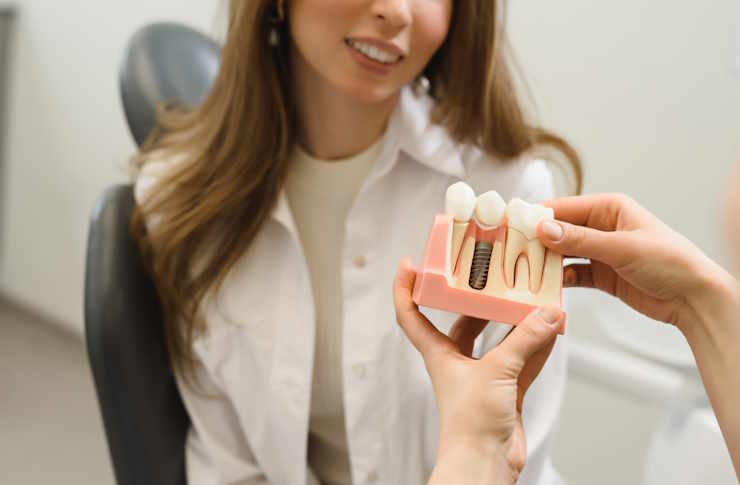Dental Implants for Seniors 2025: Costs and Tips
Considering implants in 2025 can feel overwhelming, especially when sorting real costs, options like full arch solutions, and how age related factors affect healing. This guide explains typical price ranges in the United States, what affects the total bill, and practical tips to plan care with local services in your area.

Choosing dental implants as an older adult involves balancing long term function, comfort, and budget. In 2025, more clinics offer streamlined implant workflows, but pricing still varies widely by case complexity and location. Understanding what you are paying for, how different full arch options compare, and which questions to ask in your area can help you plan treatment confidently.
Implant cost: what to expect in 2025
Implant cost is a combination of multiple line items rather than a single fee. Typical components include the implant fixture placed in bone, the abutment that connects the implant to a restoration, and the crown, bridge, or denture that you see and use. Additional needs such as 3D imaging, bone grafting, sinus lifting, extractions, tissue management, and sedation can add to the total. Fees often reflect the training of the clinician, lab quality, and regional overhead in your area.
For a single missing tooth, a common United States range in 2025 is roughly 3,000 to 6,000 for the implant, abutment, and crown together, not including grafting when needed. Multi tooth cases and full arch treatments scale from there. Seniors may see slightly higher totals if bone grafting, medical clearances, or additional visits are required, especially when balancing medications like anticoagulants or managing chronic conditions.
Cost of denture on 4 implants explained
A denture supported by four implants can mean two different concepts. One is a fixed full arch bridge secured to four implants, often called an all on 4 style treatment. This is not removed by the patient and feels most like natural teeth. The other is a removable overdenture that snaps onto four implants via attachments; it is more affordable but still far more stable than a traditional denture. Both approaches can improve chewing and confidence for seniors compared to conventional plates.
Typical price ranges in the United States vary by material, lab work, and case complexity. A removable overdenture on four implants may range from about 12,000 to 25,000 per arch including surgery and the denture. A fixed full arch bridge on four to six implants commonly falls around 18,000 to 32,000 per arch. Treating both arches can double these estimates. Insurance plans may contribute to parts of the procedure such as extractions or the denture itself, but most medical plans do not cover implants; dental plans often have annual maximums that cap benefits well below full arch fees.
Real world costs also depend on the practice model. National implant centers may bundle services at a package price, while independent prosthodontists and oral surgeons often use a team approach with separate surgical and restorative fees. Dental school clinics can offer lower cost care with longer timelines. Always request a written treatment plan that itemizes each component so you can compare apples to apples.
| Product or Service | Provider | Cost Estimation |
|---|---|---|
| Single implant with abutment and crown | Aspen Dental network clinics | Commonly 3,000 to 6,000 per tooth, case dependent |
| Removable overdenture on four implants, one arch | Affordable Dentures and Implants | Often 12,000 to 22,000 per arch depending on materials and attachments |
| Fixed full arch bridge on four to six implants | ClearChoice Dental Implant Centers | Frequently 20,000 to 32,000 per arch based on case complexity |
| Full arch treatment in teaching clinic | University dental schools such as UCLA or NYU | Often 20 to 50 percent lower than typical private clinic fees, timelines longer |
Prices, rates, or cost estimates mentioned in this article are based on the latest available information but may change over time. Independent research is advised before making financial decisions.
What does ‘diamond implant’ mean
Diamond implant is not a standard clinical category in dentistry. Some marketing uses the term to describe premium materials or coatings such as diamond like carbon on instruments, while others may simply refer to high end implant brands or zirconia implant options. Titanium remains the most common implant material due to long track records of success. Zirconia implants are metal free and may be considered for specific preferences, but both options should be evaluated based on bone quality, bite forces, and your medical history rather than branding terms.
For seniors, the most important factors are candidacy and maintenance. Strong candidates have adequate bone volume or can undergo grafting, healthy gums, and manageable medical conditions. Medications like bisphosphonates or blood thinners, past radiation to the jaws, and uncontrolled diabetes require careful planning. After placement, daily cleaning with soft brushes and floss or interdental aids, regular professional maintenance, and avoiding tobacco significantly improve long term outcomes.
Conclusion In 2025, implant solutions for older adults range from single tooth replacements to full arch treatments on four or more implants. Costs reflect the sum of surgical and restorative steps, materials, and the expertise behind them. By comparing itemized plans, asking about alternative materials and maintenance, and considering local services including teaching clinics, seniors can align comfort and function with a realistic budget.
This article is for informational purposes only and should not be considered medical advice. Please consult a qualified healthcare professional for personalized guidance and treatment.




